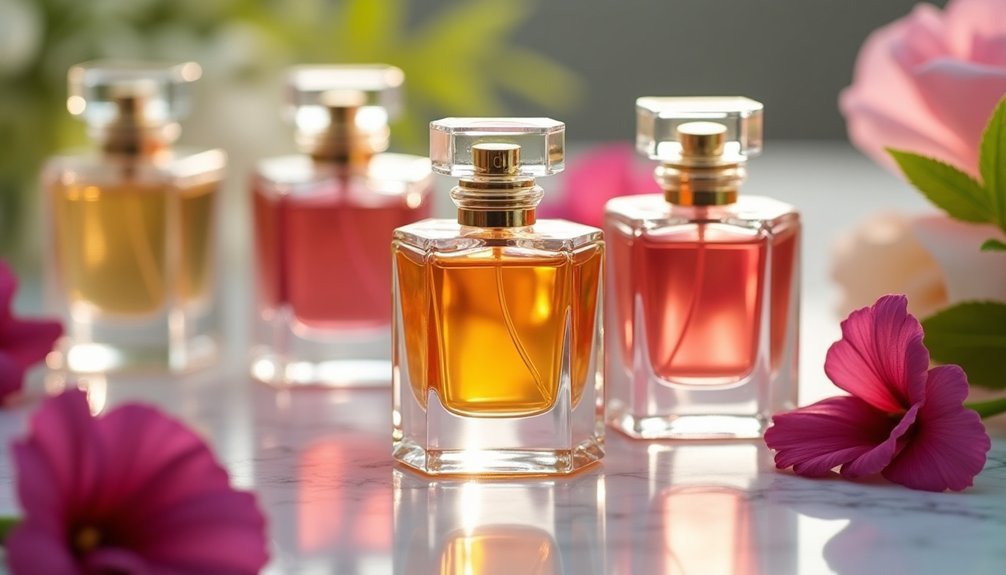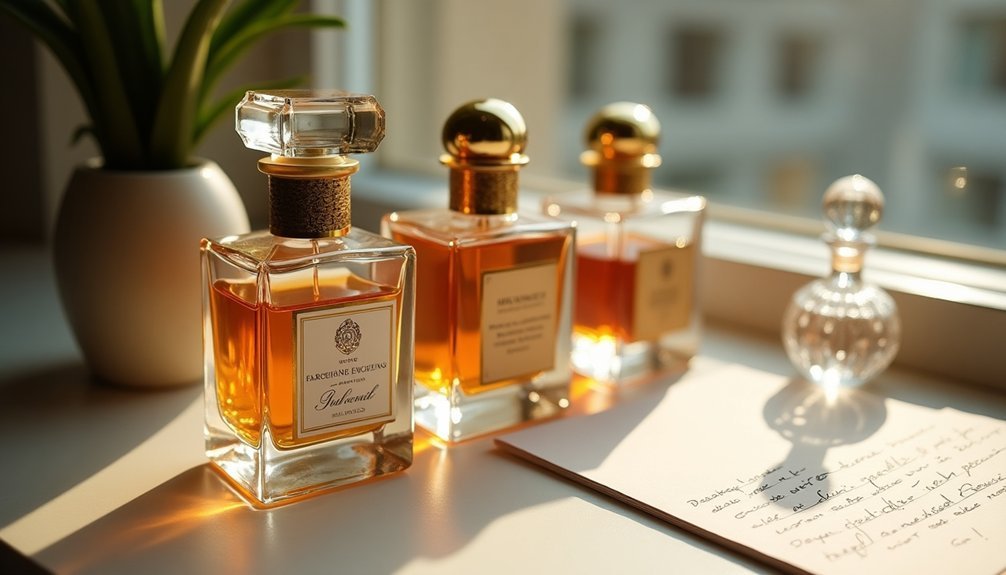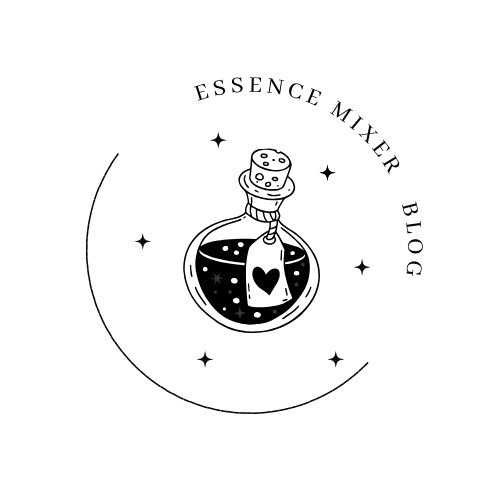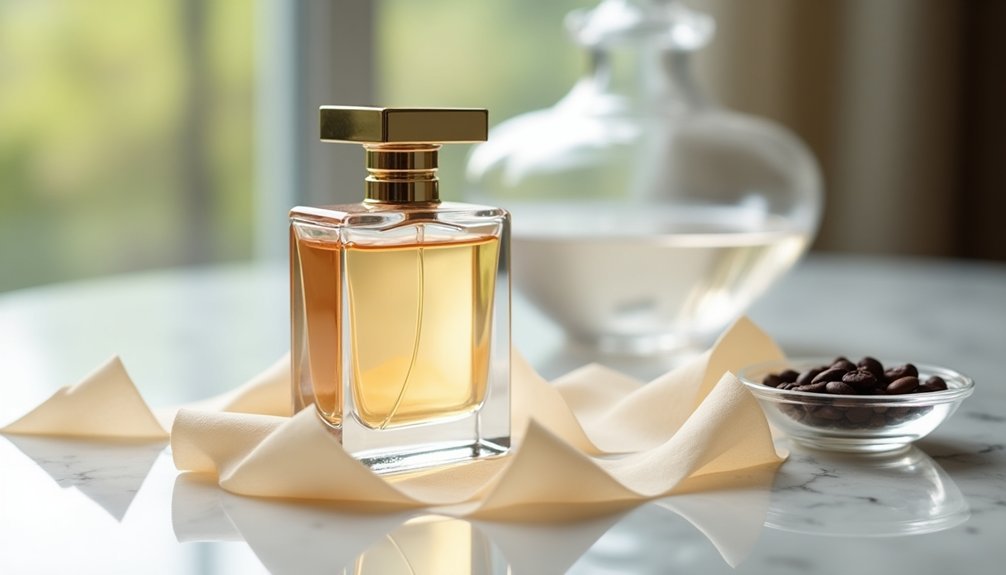To test perfume chemistry effectively, start by applying the fragrance directly to clean, moisturized pulse points without rubbing. Let it settle for 30 seconds before taking your first sniff, as this allows the alcohol to evaporate and reveals true scent notes. Then, monitor how the fragrance evolves on your skin over several hours, taking occasional breaks to reset your nose. Your unique body chemistry holds the key to revealing each perfume's full potential.
Understanding Your Skin's Natural Scent Canvas

Why do the same perfumes smell different on different people? Your skin chemistry plays an essential role in how scent molecules interact with your body. Your unique combination of body oils, pH levels, and even diet creates a distinctive canvas that transforms any fragrance you apply.
To properly test perfume and understand how it works with your natural chemistry, start by applying fragrance to your pulse points where the temperature is naturally warmer. These areas help the scent develop and project better throughout the day.
Before fragrance testing, make certain you're working with moisturized skin, as hydrated skin holds scents longer and allows them to unfold more effectively. You'll want to test the same perfume multiple times under different conditions to truly understand how your skin chemistry affects its development.
The Art of Pulse Point Testing
With your skin chemistry established as your unique scent foundation, mastering the technique of pulse point testing will help you discover how fragrances truly perform on your body. When you test perfume at department stores, spray directly onto pulse points where natural oils and heat enhance the scent's true character. Let the scent settle for 30 seconds before you inhale too deeply, allowing the alcohol to evaporate.
| Location | Why It Works | How to Apply |
|---|---|---|
| Wrists | High heat emission | Direct spray, no rubbing |
| Behind Ears | Consistent warmth | Light single spray |
| Inner Elbows | Protected area | Gentle spray, let dry |
| Neck | Strong projection | Hold bottle 6" away |
| Chest | Large surface area | Two light sprays |
Remember to avoid rubbing your wrists together, as this breaks down the fragrance molecules and alters your perfume's intended development.
Evaluating Fragrance Evolution Over Time

Understanding how a fragrance evolves on your skin requires patience and careful observation over time. When you test a perfume on the back of your hand, your first step is to wait 30 seconds before taking your initial smell. Your body chemistry plays an essential role in how the scent develops, so you'll need to take a break for 15-30 minutes to observe changes properly.
- Apply the fragrance and resist immediate evaluation
- Let the scent settle for at least 30 seconds
- Wait 15-30 minutes while engaging in other activities
- Monitor the fragrance evolution throughout the day
- Test earlier when your sense of smell is most receptive
During this fragrance evolution process, you'll notice how different notes emerge and interact with your unique skin chemistry.
This methodical approach helps you determine whether the perfume truly suits you and how it performs over time.
Frequently Asked Questions
How Do You Test Body Chemistry for Perfume?
Apply perfume to your pulse points and let it settle for 30 seconds. Wait 15-30 minutes to experience how it develops with your skin chemistry. Test during daily activities to evaluate lasting power.
What Is the Best Way to Test Perfume?
First spray fragrances on paper blotters, then apply your favorites to pulse points. Don't rub your wrists together, and wait 15-30 minutes to see how the scent develops on your skin.
How to Test the Performance of Perfume?
Apply the perfume to your clean pulse points and wait 30 seconds. You'll want to check how long it lasts, track its changing scent throughout the day, and notice how it projects in different environments.
What Is the 30 50 20 Rule for Perfume?
The 30-50-20 rule guides your perfume's composition: you'll find 30% top notes for initial impact, 50% middle notes for the main character, and 20% base notes for long-lasting depth and stability.
In Summary
You've now got the key tools to become your own fragrance expert. Test perfumes on your natural skin chemistry, target those warm pulse points, and take time to experience how scents evolve throughout the day. Don't rush your fragrance decisions – a careful testing approach helps you find scents that truly complement your unique chemistry and personal style. Trust your nose and enjoy the journey of scent discovery.





Leave a Reply